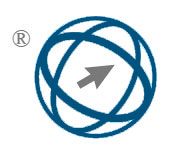4D Flight Trajectory Prediction Using CURE-Based Clustering of ADS-BData
Abstract
Aiming at the problems of insufficient flight trajectory prediction accuracy and low early warning efficiency of air traffic conflicts under the background of the sharp increase in air traffic volume, a 4D trajectory prediction method based on the clustering using representatives (CURE) algorithm is studied and proposed. The method utilizes historical track data provided by the Automatic Dependent Surveillance-Broadcast (ADS-B) system to measure track similarity by means of modified Euclidean distance. It is also combined with hierarchical clustering techniques to cluster and analyze the tracks within the terminal area. Experiments showed that the proposed method outperformed the traditional model in many aspects. For example, in track prediction, the CURE-based model had an average time error of only 17.6 seconds, a height error of 31.5 m, and a horizontal root mean square error (RMSE) of 0.55 nautical miles. Furthermore, using conflict detection based on 4D planes and geometric methods successfully reduced the false alarm rate to 4.30% and controlled the missed alarm rate within 0.08%. Together with the experimental data, these results verify the effectiveness and reliability of this method in complex aviation scenarios. This indicates that the CURE algorithm can improve track prediction accuracy and provide stronger technical support for aviation traffic management.
Full Text:
PDFDOI: https://doi.org/10.31449/inf.v49i5.8611

This work is licensed under a Creative Commons Attribution 3.0 License.









